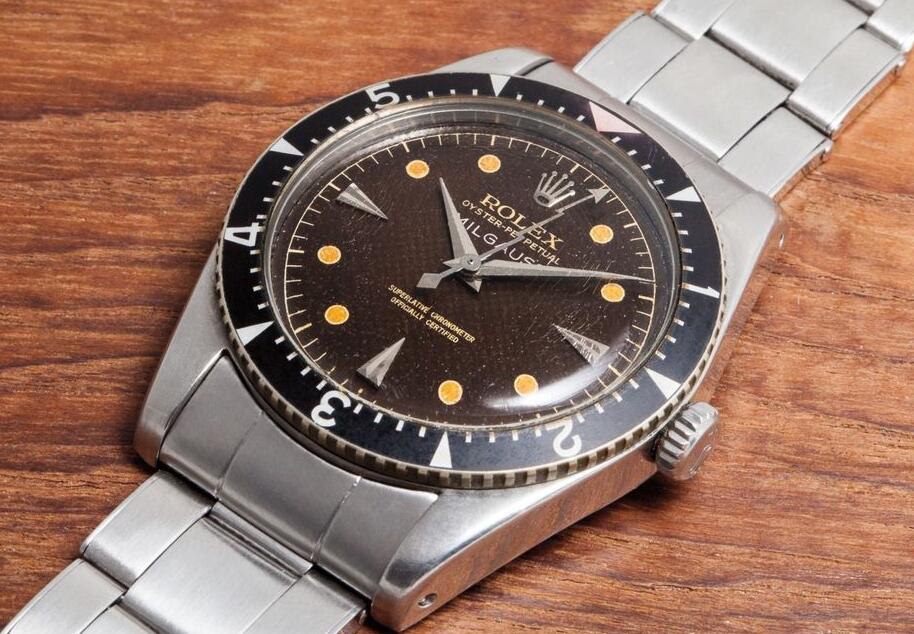You might hear watch companies (or even watchnerds) brag about their anti-magnetic Swiss made replica watches and how many gauss they can withstand. If you’ve wondered what that means and why it’s a big deal, you’re surely not alone. What is an anti-magnetic watch, anyway? Is it really important? Why does the US AAA fake Rolex Milgauss watches have that funky seconds hand? Here’s what you need to know.
How do magnetic fields affect watches?
Magnetic fields are one of the most common factors negatively affecting the accuracy of mechanical best replica watches. Internal watch parts made of metal can become magnetized when introduced to these fields. The most common target is the balance spring: the long, curled-up strip of metal that oscillates in conjunction with the balance wheel, regulating the ticking of a watch.
When the balance spring becomes magnetized it sticks to itself, effectively becoming shorter, which causes the high quality copy watches to oscillate faster — and ultimately to run fast. That’s the most common problem, anyway; exposure to magnetism can also interfere with the balance spring’s temperature compensation, causing the watch to run at different rates in different temperatures.
How do watchmakers combat magnetization?
Watchmakers have devised two different ways to battle magnetism. One is to protect the entire movement with an inner cage made out of a very magnetically permeable material, usually soft iron, that attracts the magnetic field lines, leaving the movement itself unaffected. Soft iron is easily magnetized, but unlike some materials (such as steel), it doesn’t remain magnetized once the source of the magnetic field is no longer present. This approach was one of the earlier methods, which has largely been replaced in modern luxury replica watches by the following solution.
The other, more current method is to make balance springs and other parts from nonferrous materials that aren’t easily magnetized. Historically, steel has been a common balance spring material, but for the past several decades, Nivorox (a nickel-iron alloy) and similar alloys have been industry go-to’s, partially due to their improved magnetic resistance (but not imperviousness). More recently, watchmakers have increasingly been making balance springs from silicon, which has generally proven far more effective.
Silicon hairsprings were once an exotic feature found only in high-end fake watches wholesale, but the tech has improved and trickled down to the affordable ranges. The Swatch Group, for example, has been equipping many of its upgraded mass-produced movements with silicon balance springs for under a grand. They might command a small premium, but these are features we tend to seek out.
The history of anti-magnetic watches
Vacheron Constantin is credited as the first watchmaker to attempt making an anti-magnetic watch, having done so in 1846 with a palladium balance spring. The company wouldn’t successfully build anti-magnetic super clone watches for sale until decades later, when it eventually made the world’s first anti-magnetic pocket watch in 1915. Tissot created the Antimagnétique in 1930, supposedly the world’s first antimagnetic wrist watch.
Anti-magnetic watches didn’t really enter the mainstream until a couple decades later. A notable boon to the development of anti-magnetic replica watches shop was the creation of the Jaeger-LeCoultre and IWC Mark XI-spec watches in 1948, made at the behest of the British Ministry of Defense, which, among other requirements, demanded its pilot watches to be anti-magnetic. Not long after, Rolex created the Milgauss at the request of the CERN, and Omega and IWC also made their own anti-magnetic Swiss movements fake watches for other professionals who worked in the presence of strong magnetic fields.
Why does anti-magnetism in watches matter?
The anti-magnetic watch, or at least advancements in anti-magnetic tech, remain relevant today. In the ’40s and ’50s, anti-magnetic replica watches site really only proved essential to engineers, scientists and other professionals who encountered strong magnetic fields on a regular basis, but think about all the electronic devices that surround us today: Smartphones, computers, tablets, monitors, speakers, kitchen appliances — they all produce magnetic fields and have the potential to mess with your watch’s accuracy.
How much protection you need, though, is a different story. The magnetic field produced by a microwave oven from an inch away, for example, is only about two gauss. Power tools, from the same distance, will produce up to about eight to ten gauss. So yeah, something like Omega’s 15,000+ gauss-resistant Aqua Terra or cheap Rolex Milgauss replica watches (1,000 gauss-resistant) is overkill for regular wear.
That said, demagnetization is a fairly common watch servicing requirement, so while the fix is cheap and easy, if you’d rather avoid having to take a watch in for service altogether, or just want the peace of mind, an ISO 764 compliant watch should be plenty. That means your watch is resistant to magnetic fields up to 4,800 A/m, or about 60 gauss. Still, like super-deep dive 1:1 fake watches or ultra-complex movements, embracing the overkill is all part of the allure.
